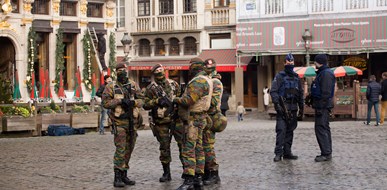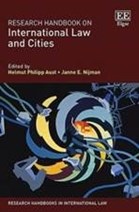[New essay] Urban legacies of 9/11: An international law perspective
Published 6 October 2021
National security is increasingly understood as an urban issue and as an issue of urban security.
In a new essay on constitutional law blog Verfassungsblog, researchers Helmut Philipp Aust (Freie Universität Berlin) and Janne E. Nijman (Asser Institute) point to the missing urban dimension in the international law debates on the attacks of 9/11: “International law needs an update, desperately, to get a sense of how international cooperation is unfolding today”.
When reflecting upon the legacy of the attacks of 9/11 as an international lawyer, you might think of topics such as the right to self-defense against non-state actors, or of the legacy of the C.I.A. extraordinary renditions programme. Most probably, you will not have thought of the urban dimension of the attacks, as in traditional international law cities are absent as actors. For a long time, scholars in public international law did not give a lot of attention to sub-national actors.
In their Verfassungsblog essay Urban Legacies of 9/11: An International Law Perspective, however, Aust and Nijman delineate how cities have ‘asserted themselves as internationally relevant actors in manifold ways’. Aust and Nijman: “This rise of cities towards being important international actors, has much to do with, on the one hand, a certain geopolitical constellation and, on the other hand, developments in the field of climate change governance, which has led to spill-over effects into other fields, such as security.”
Deficits of inter-state cooperation
The authors explain how a ‘common disenchantment’ with the global climate change regime around the United Nations Framework Convention has opened up a policy space, in which cities and their transnational networks increasingly claimed a role to play. Aust and Nijman: “Pointing to the alleged deficits of inter-state cooperation, cities claimed that they would be more agile and willing to cooperate. This rhetorical move has also been replicated in other policy fields, including security, where a panoply of transnational networks exist among cities today (…) and where such networks also partner with international organizations in various ways.”
“Security is increasingly understood as an urban issue.”
Security as an urban issue
In the essay, Aust and Nijman assert that national security is increasingly understood as an urban issue and as an issue of urban security. “Being the targets of global terrorism, cities have claimed a role in counter-terrorism. Hence, in this policy field, international and regional organisations are turning to cities as partners, for example in the prevention of terrorism, radicalisation, and violent extremism. The UN, EU or Global Counter Terrorism Forum (GCTF) are well aware that the so-called “life-cycle of radicalisation” frequently finds fertile grounds in cities with marginalised groups and individuals; research points to a relationship between marginalisation, social exclusion, and serious mental health issues of terrorist suspects living in Dutch cities. Therefore, these international organisations seek connections with the local level and recognise the relevance of the condition of the social tissue in cities. Countering terrorism cannot be done without practitioners active in the urban space and their involvement in the development of effective, rule of law and human rights compliant practices, policies and norms.”
The authors write that the link between global governance and international law to the ‘traditionally minded international lawyer will all sound rather vague’. How can cities and their local governments be part of this international law game when they are not even subjects of international law in a traditional sense? Where are the sources of international law as detailed in Article 38 of the Charter of the International Court of Justice?
Old categories no longer work
However, according to Aust and Nijman, these questions are beside the point, as ‘global governance has moved on far beyond the traditional categories of public international law’ and old categories no longer work. Aust and Nijman: “The changes of global security cooperation, which have taken place since 9/11, are one potent example to underline the need for such an update. In this development, cities and their transnational networks have had a role to play - arguably not among the forefront and not in a way which would displace the centrality of states for both security governance and international law. But increasingly, a vocabulary of international law which does not allow to take into account what sub-national actors are doing, is incomplete and risks overlooking important developments in various policy fields.”
In their closing remarks, Aust and Nijman write: “International law needs an update, desperately, to get a sense of how international cooperation is unfolding today. (…) If international lawyers decide to rest in the comfortable armchair position of the established sources and subject doctrines that we teach our students, we will miss important real-world developments, which are driven by technocrats, analysed by political scientists and fought by social movements. It is all too easy to close our eyes to these developments. The new worlds of international law and global governance are messy – but we should embrace them as international lawyers.”
Read more
Read the full Verfassungsblog essay ‘Urban Legacies of 9/11: An International Law Perspective’ by Helmut Philipp Aust (Freie Universität Berlin) and Janne E. Nijman (Asser Institute).
Research Handbook on International Law and Cities
The groundbreaking Research Handbook on International Law and Cities provides a comprehensive analysis and assessment of the impact of international law on cities. It sheds light on the growing global role of cities and makes the case for a renewed understanding of international law in the light of the urban turn.
Authors Helmut Philipp Aust & Janne E. Nijman



